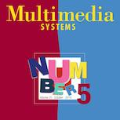To date, several automated strategies for identification/segmentation of Multiple Sclerosis (MS) lesions with the use of Magnetic Resonance Imaging (MRI) have been presented, but they are outperformed by human experts, from whom they act very differently. This is mainly due to: the ambiguity originated by MRI instabilities; peculiar variability of MS; non specificity of MRI regarding MS. Physicians partially manage the uncertainty generated by ambiguity relying on radiological/clinical/anatomical background and experience. To emulate human diagnosis, we present an automated framework for identification/segmentation of MS lesions from MRI based on three pivotal concepts: 1. the modelling of uncertainty; 2. the proposal of two, separately trained, CNN, one optimized for lesions and the other for lesions with respect to the environment surrounding them, respectively repeated for axial, coronal and sagittal directions; 3. the definition of an ensemble classifier to merge the information collected by different CNN. The proposed framework is trained, validated and tested on the 2016 MSSEG benchmark public data set from a single imaging modality, the FLuid-Attenuated Inversion Recovery (FLAIR). The comparison with the ground-truth and with each of 7 human raters, proves that there is no significant difference between the automated and the human raters.
翻译:迄今为止,已经提出了若干利用磁共振成像(磁共振成像)识别/分解多发性损伤的自动化战略,但这些战略的成绩优于人类专家,而人类专家的行为则大不相同,主要原因是:由磁共振不稳定引起的模糊性;MS的特异性;MRI对MS的不具体性;MRI对MS的不具体性;医生部分管理依赖放射性/临床/模拟背景和经验的模糊性所产生的不确定性。为了仿效人类诊断,我们提出了一个用于识别/分解磁共振性裂变的自动化框架,其依据是三个关键概念:1. 不确定性建模;2. 提议由两个单独培训的CNN、一个优化的损害,另一个优化的损害周围环境的损害;分别为轴心、内线和外线方向重复;3. 定义一个共同分类器,以合并不同的CNN收集的信息。 拟议的框架对2016年MSEGG基准公共数据集进行了培训、验证和测试。




